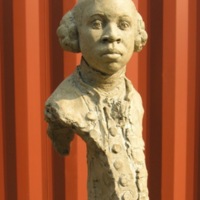
OLAUDAH EQUIANO - African, slave, author, abolitionist
This sculpture of the abolitionist Olaudah Equiano was made by London-based sculptor Christy Symington in 2006 to mark the bicentenary of the abolition of the British transatlantic slave trade, with the intent to further share Equiano's story. It was first exhibited by selection at the Society of Portrait Sculptors 'FACE 2007' annual exhibition. The sculpture portrays Olaudah Equiano’s social standing through his clothing and hairstyle which was unusual for a black man in that time. The continent of Africa is implied by the shape of the back of his shoulders arrived at by chance whilst modelling. Broken shackles and chains are sculpted down the side of the sculpture, prompting his opposition to slavery as an abolitionist and his path to freedom. The Brookes slave ship diagram and an enlarged detail of a single enslaved female figure from the diagram are found on the stem of the sculpture - a reminder that there were women and children on the ships as well as men.
Since 2007, the sculpture has featured in several other exhibitions including a solo 'OLAUDAH EQUIANO MAN AND BROTHER' at the Stephen Lawrence Centre Gallery (2015); 'Black Georgians: The Shock of the Familiar' at the Black Cultural Archives (2016); 'Revelation of the Head' at Messums Wiltshire (2018); 'Untold Stories: A Celebration of Black People in Kent' (2018); Royal Society of Sculptors Members' 'Summer Exhibition' (2018); and Salon d'Automne Paris (2019). There is a bronze edition and in 2017 a black and white duo edition (featured in exhibition 'OLAUDAH EQUIANO in BLACK and WHITE' at SPACE). The bronze sculpture is now in the permanent collections of the International Slavery Museum in Liverpool (2017), Royal Museums Greenwich (2018) and Parliament UK (2019).
Photos: Tontxi Vazquez / Sylvain Deleu © Christy Symington MRSS/DACS 2019
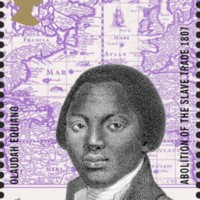
Royal Mail Special Stamps
In 2007, Royal Mail marked the bicentenary of the abolition of the British slave trade with a series of stamps. Designed by Howard Brown, the First Class stamp showed Olaudah Equiano. Other stamps in the collection featured the abolitionists William Wilberforce, Granville Sharp, Thomas Clarkson, Hannah More and Ignatius Sancho.
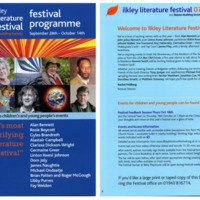
Ilkley Literature Festival, 2007
A number of events to mark the bicentenary of the Abolition Act of 1807 took place as part of Ilkley Literature Festival in 2007. Authors Caryl Phillips and Ben Okri discussed their work, and writers from the Peepal Tree Press Freedom Project premiered their poetry. 2007 Poet in Residence Rommi Smith invited festival goers to help create a unique literary 'Freedom Quilt', and gave a multi-media performance drawing on her recent visit to the Gambia. Street theatre was provided by performances of Sugar Beat Skank by Regeyshun Dance and the Leeds Bi-centenary Transformation Project. Members of the Leeds Diasporian Stories Research Group shared new material uncovered in the course of their research into the links between Yorkshire and the Atlantic trading world, and actor Joe Williams performed and answered questions as the African abolitionist Olaudah Equiano.
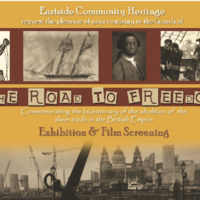
The Road to Freedom
Eastside Community Heritage worked with young people from West Ham and Stratford to explore the significance of the bicentenary within the context of their own history in London and in British history more widely. The Road to Freedom project was devised by the young people themselves, who gathered information from the Museum of London Docklands, the National Maritime Museum, the International Slavery Museum and the Birmingham Museum and Art Gallery. Their research led to a documentary-drama and an exhibition which toured venues in Newham, accompanied by discussion sessions led by the participants.
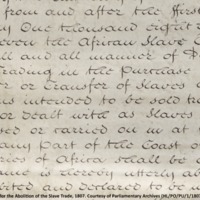
For Love of Sugar
Commissioned by 2007's City of London Festival, artist Satch Hoyt created several sculptures made only of sugar. In St Paul's Cathedral, life-sized portraits of influential black figures - including Olaudah Equiano, Ignatius Sancho and Mary Seacole - were made of painted sugar cubes. Hoyt also created two slave ships from sugar, displayed at Museum of London Docklands.
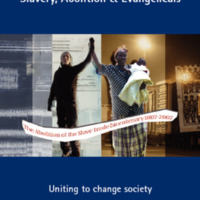
Slavery, Abolition & Evangelicals: Uniting to change society
The official publication from the Evangelical Alliance to commemorate the bicentenary had three main aims: to draw attention to biblical perspectives on slavery and society, to examine the contributions of some key abolitionists, and to offer some suggested activities for churches and groups to mark the bicentenary.
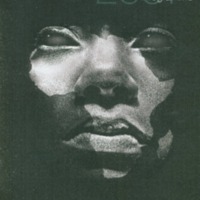
2007 Bicentenary for the Abolition of the Slave Trade Act at the National Maritime Museum
The National Maritime Museum marked the bicentenary with a range of initiatives and events including a new exhibition, a film season, poetry, music, debates, and new publications. A new permanent gallery opened at the museum in winter 2007 exploring Britain's Atlantic empire. A catalogue of slavery-related images, artefacts and documents from the collections of the museum, 'Representing Slavery', was published. The museum also devised a transatlantic slavery trail around Greenwich.
The National Maritime Museum hosted a number of events throughout 2007. The theme of the weekend 23-25 March was 'And still I rise', marked with a series of activities, performances and discussion. On August 23, International Day for the Remembrance of the Slave Trade and its Abolition, the ‘Freedom Festival: Contemporary Commemoration’ event saw a programme of creative events and performances exploring themes around the heritage of enslavement. The museum also offered a range of learning experiences based on its collections. For example, in November, a study session, 'Roots of Resistance: Abolition 1807' examined the roots of resistance and the abolition movement through talks by curators and contemporary artists. Activities for families were based on themes of freedom and carnival. 'The Big Conversation 2007' was a programme of debate and showcasing of diverse projects undertaken by students around the country, organised by the Understanding Slavery Initiative and the Department for Children, Schools and Families.
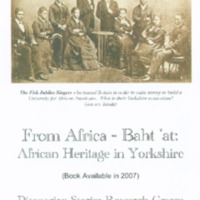
From Africa - Baht 'at: African Heritage in Yorkshire
The Diasporian Stories Research Group includes writers, historians, educators and performing artists working to uncover Black history associated with Yorkshire. To mark the bicentenary, the group published its first book 'From Africa Baht 'at', exploring links between Yorkshire and the Atlantic trading world. This included influential Black men and women who lived in or visited Yorkshire, and the shipbuilding industry of the Yorkshire coast that supplied ships for slaving voyages. The Fisk Jubilee Singers toured Britain in order to raise money to build a University for African-Americans. One of the singers settled in Yorkshire.
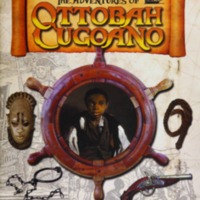
The Adventures of Ottobah Cugoano
The Adventures of Ottobah Cugoano is a book written for young readers, written by Marcia Hutchinson and Pete Tidy, and published by Primary Colours as part of the Freedom and Culture 2007 initiative. Ottobah Cugoanao was an African abolitionist, captured in 1770 in Fante (present-day Ghana) and sold into slavery. He was eventually made free and baptized John Stuart in London. Stuart became active in Sons in Africa and through his publications campaigned for abolition. A Key Stage 2 and Key Stage 3 Teaching Pack was produced to accompany the adventure story, written by Marcia Hutchinson, Pete Tidy and Shazia Azhar, with a foreword by David Lammy MP.
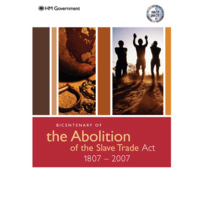
Bicentenary of the Abolition of the Slave Trade Act 1807-2007
The official publication from the British Government in response to the bicentenary included a message from Prime Minister Tony Blair. It set out the history of transatlantic slavery and resistance to it, and featured a calendar of upcoming events for 2007 relating to slavery and abolition. The publication also detailed contemporary efforts to end modern slavery. Later in 2007, 'The way forward: bicentenary of the abolition of the Slave Trade Act 1807-2007' reflected on some of the commemorative activity that had taken place in Bristol, Hull, Liverpool, London and Greater Manchester. With a foreword by the new Prime Minister, Gordon Brown, the theme of the publication was 'Reflecting on the past, looking to the future' and it linked efforts for the abolition of historical and contemporary slavery. The publication also looked to how to tackle inequality and poverty in the UK, Africa and the Caribbean.
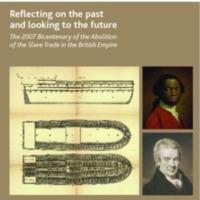
Reflecting on the Past and looking to the future
The official publication to mark the bicentenary from the Department for Culture, Media and Sport (DCMS), setting out the Government response to the commemorations. This included the formation of a 2007 Bicentenary Advisory Group, chaired by the Deputy Prime Minister John Prescott MP, to co-ordinate a national response to the bicentenary and to UNESCO International Slavery Remembrance Day on 23 August. The Group was made up of a number of influential stakeholders to encourage action across the cultural, community and faith sectors and ensure that the bicentenary was made relevant to local communities. Participating organisations included Anti-Slavery International, Amnesty International, the Archbishops Council, Bristol City Council, Churches Together in England, the Equiano Society, the Evangelical Alliance, National Museums Liverpool, National Maritime Museum, Museum of London, the Wilberforce Institute for the study of Slavery and Emancipation and several faith and community leaders.
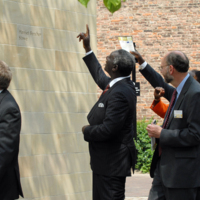
Opening of the Wilberforce Institute for the study of Slavery and Emancipation (WISE)
The Wilberforce Institute for the study of Slavery and Emancipation (WISE) was officially opened in Hull in 2006 in anticipation of the city's bicentenary commemorations. The University of Hull research centre specialises in researching the history of slavery, while also examining contemporary slavery and human rights abuses in the present day. The patron of the institute is Archbishop Desmond Tutu and the institute was opened by then President of Ghana, John Agyekum Kufuor. The WISE Humanitarian Wall commemorates historical and contemporary figures in the struggle against slavery, including Olaudah Equiano, Harriet Beecher Stowe and Nelson Mandela.
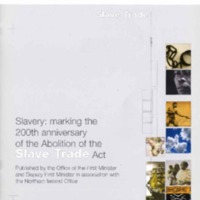
Slavery: marking the 200th anniversary of the Abolition of the Slave Trade Act
The official publication from the Office of the First Minister and Deputy First Minister in association with the Northern Ireland Office, based on the research of historian Nini Rodgers.
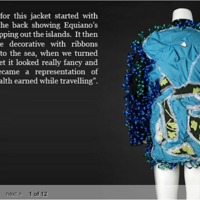
The Equiano Project Culture Clubs
Part of the Equiano Project led by Birmingham Museum and Art Gallery, the Culture Clubs were a series of outreach projects enabling contributions by local schools and community groups to the way Equiano’s story is told and the issues surrounding how his experience is represented. The four groups - Techno Elders, Hockley Youth Project, Deansfield Secondary School and King George V Primary School - worked closely with the project teams and professional artists to produce work based upon Equiano’s life story. Their work featured within the Gas Hall and Soho House exhibitions.
The Hockley Youth Project’s work was displayed in the ‘Unshackled’ exhibition at Soho House in Birmingham, once home of the industrialist Matthew Boulton. Working with visual artist Nicola Richardson, the group produced a series of suits and artworks which explore themes around Equiano’s life, particularly his success as a businessman and entrepreneur.
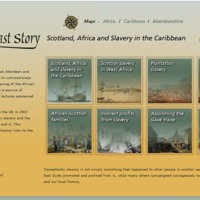
A North East Story: Scotland, Africa and Slavery in the Caribbean
This online exhibition and learning resource linking the history of transatlantic slavery to North East Scotland was organised by an Aberdeen and Aberdeenshire Bicentenary Committee, including representatives from Aberdeenshire Council, Aberdeen City Council, the University of Aberdeen, the Robert Gordon University and the African and African-Caribbean communities. It followed on from a service of commemoration and a series of public lectures sponsored by the Committee in 2007. The exhibition logo is inspired by the mythical Sankofa bird, a cultural symbol of the Akan-speaking peoples of Ghana in West Africa. Featured here are a number of resources available to download from the North East Story website.
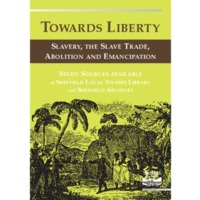
Towards Liberty: Slavery, the Slave Trade, Abolition and Emancipation
This booklet was produced to mark the bicentenary in 2007 and to highlight the material available in Sheffield Local Studies Library and Sheffield Archives for the study of slavery, the slave trade, abolition movements and emancipation. It looks, in particular, at the role of the city of Sheffield and the surrounding areas, and its local residents. Sheffield benefited from the slave system in that goods manufactured in the city's factories were used on the plantations in the West Indies and America. Sugar and coffee produced on the plantations was consumed by residents. There were active anti-slavery groups in Sheffield, including the Ladies Anti-Slavery Society, and petitioning and boycotts were common. Hannah Kilham, a Sheffield Quaker, published a memoir of her experiences in West Africa as a teacher in the 1820s and 1830s.
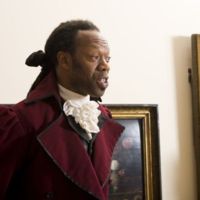
Breaking Chains - Sheffield Civil Rights
Breaking Chains - Sheffield Civil Rights was a project by Sheffield Galleries and Museum Trust to look at the slave trade and to celebrate Sheffield’s heritage by exploring the role local campaigners played in securing workers' rights. The resources targeted Key Stage 2 pupils. There was a particular focus on the visit to Sheffield by the African abolitionist Olaudah Equiano in 1790. Actor Joe Williams played Equiano in a dramatisation still available to view on the teaching resource. Featured here are some of the downloads available.

Events to mark the bicentenary in Exeter
On Sunday 25 March 2007, a ceremony was held on Cathedral Green in Exeter to mark the bicentenary. Organised by Exeter City Council, the ceremony was attended by members of the public and individuals representing local organisations. Historian Lucy MacKeith examined the links between Devon, the transatlantic slave trade and its abolition. Extracts were read from the Narrative of Olaudah Equiano, and names read aloud of some of the Africans who came to Devon because of the county's connection to the slave trade.
The play 'Albert and the Story of Equiano' was performed at the Royal Albert Memorial Museum in October 2007. It told the story of Olaudah Equiano, a leading African figure in the British abolition movement in the 18th century.
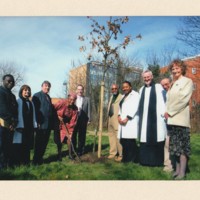
Events led by Leyton and Leytonstone Historical Society
The Leyton and Leytonstone Historical Society led a number of commemorative events to mark the bicentenary. In March 2007 an oak tree was planted in the churchyard of St John’s Church Leytonstone. At the ceremony there were a number of speeches, after which community nurse and local campaigner Mrs Zena Edmund-Charles was invited to plant the commemorative tree. There was also an art exhibition at St John's featuring artefacts and mementos of the period. A commemorative ‘Freedom Walk’ was led by local historian Peter Ashan, following a route around Leyton, Leytonstone and Walthamstow. The exhibition was shown again during Black History Month, alongside a video story of Olaudah Equiano.
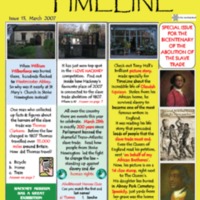
Special issue of TimeLine: Fun and Facts about Stoke Newington and Hackney History and Heritage
TimeLine magazine is a lifelong learning project centred on exploring the history and heritage of Hackney through stories, games, interviews and memories. The magazine is distributed free to schools, libraries and healthcare providers. In March 2007 a special issue of TimeLine examined the bicentenary of the Abolition Act 1807, and Hackney connections to abolition. The special issue included a picture story of the life of Olaudah Equiano.